Is the W Trek the World’s Best Beginner Backpacking Trail?
My experience hiking the W Trek in Torres Del Paine National Park in 4 days was an adventure from beginning to end. I’m sharing my takeaways from this life-changing trek through valleys, glaciers, mountains, forests, and alpine lakes, along with tips and information you’ll need to hike this famous backpacking trail in the Chilean Patagonia. This post may contain affiliate links that help me earn a small commission at no cost to you if you choose to make a purchase. Thanks for helping support my blog!
My Experience Hiking the W Trek: How It Started
My feet had just touched the South American continent again after an 11-day journey to the Antarctic Peninsula. My body was relaxed and my mind was full of images of penguins and whales and the bluish-gray skyline that never ceased to ebb and flow.
Today was the end of one expedition and the beginning of another. As I headed to the small airport in Ushuaia and boarded a flight to El Chalten in Argentina, I still felt the high of the last week. I watched the massive peaks in Ushuaia disappear from the plane window, giving way to clouds and distant plains. It’s one of the most spectacular flights I’ve ever had. Soaring over the tops of the snow- and glacier-covered peaks, it’s nearly impossible to look away from the beauty of these mountains.
The jagged rocks soon become specks in the distance and the open plains of Southern Argentina come into view, punctuated by tendrils of the brightest cloudy blue waters I’ve ever seen. More mountains come into view as my plane descends to land.
Arriving in Chile to Reach Torres Del Paine National Park
I was heading across the border to Chile. El Chalten—the base for many people going to explore the Perito Moreno Glacier in Los Glaciares National Park or those interested in hiking to the famous view of Fitz Roy or its nearby trails—is a destination in itself. Don’t let the map in this part of the world confuse you. Getting from Argentina to Chile is more complicated than it seems due to few official border crossings and limited direct flights without flying back to Santiago or Buenos Aires.
I was trying to get to Torres Del Paine, and from Ushuaia, the fastest route was flying to El Chalten and then taking a 4.5-hour bus ride across the border to Puerto Natales.
I spent the night in El Chalten. I managed to find a small restaurant near my hotel, where I dined on potato soup, fresh greens, and grilled trout while sipping a delicious local house red that cost significantly less than my normal morning coffee.
The bus ride went off without incident, but I recommend booking your bus tickets in advance and choosing your seat assignment as well. Everyone is offered a small snack pack for the ride. It’s really helpful if you understand or speak some Spanish, especially if you’re bringing luggage along.
The scenery along the drive was spectacular: rolling hills in shades of yellow and green, the spring flowers adding vivid colors to the painting that passed by my window. I spotted my first Andean condors dining on a roadside carcass and wow—the size of these birds up-close had my eyes wide in astonishment as the bus drove past.
The border crossing is nothing more than a small building on the side of a small road next to a farm. Before long, we were dropping people off in Punta Arenas, the larger town in Chilean Patagonia and where many stay to start their trips into Torres Del Paine. I disembarked closer to the park in Puerto Natales, and hopped into a pre-booked car to head to the Hotel Lago Grey.
Before I go into detail about my experience hiking the W Trek in Torres Del Paine in 4 days, read about the park’s history, wildlife, diverse landscapes, and main attractions below. I’ll cover how to get to the park, what to expect when booking your trek, and share how to hike the W Trek afterward.
About Torres Del Paine National Park
Full of mountains, lakes and glaciers, Torres Del Paine National Park is one of the most popular places to visit in Chile. It’s made up of 242,242 hectares in Chilean Patagonia and nestled in the Cordillera Paine mountain range, which forms a spur from the Southern Andes.
This park is known for its soaring mountains, bright blue icebergs that cleave from glaciers, and golden pampas (grasslands) that shelter rare wildlife, including llama-like guanacos and South Andean huemul deer. Some of its most iconic sites are the 3 granite towers from which the park takes its name and the horn-shaped peaks, Cuernos del Paine.
The park was first established in 1959, when it was known as the Parque Nacional de Tourismo Lago Grey (Lake Grey Tourist National Park). It wasn’t given its present name until 1970, with the new name referring to the park’s most famous peaks. Just a few years later in 1978, UNESCO designated part of the park as a World Biosphere Reserve.
The main attractions in Torres Del Paine National Park are:
- Cordillera del Paine: The dominant mountain range in the park, also known as the Paine Massif; formed from granite intrusion through Cretaceous-era sedimentary rocks, resulting in the formation of the huge towers and spires the park is known for today. The three most famous peaks are the Torres del Paine.
- French Valley: One of the most famous day hikes in the park (7-9 hours) leads through this gaping valley in between mountains, past Glaciar Frances, the French River, and forests of beech trees.
- Grey Glacier: This glacier in the Southern Patagonian Ice Field flows into Lago Grey, located west of the Cordillera del Paine.
- Los Cuernos: The Horns, or Los Cuernos, are horn-shaped peaks that form a ring of jagged cliffs over the French Valley that you’ll encounter on the W Trek.
The entire west side of the park is covered by the huge Southern Patagonian Ice Field, but the rest of the park offers a diversity of landscapes, like forests, shrub-land, Andean desert, and the pampas-like Patagonian steppe. And if you want to see a taste of it all, hiking the W Trek in Torres Del Paine National Park will give you a glimpse of many of the most famous sights and natural attractions.
Torres Del Paine Wildlife, Plants, and Landscapes
Torres Del Paine is home to a variety of rare and endangered wildlife, making its conservation efforts critical for the survival of species you won’t find anywhere else on Earth.
Rare wild guanacos, which are related to llamas and alpacas, can be found in Torres Del Paine National Park. Like their domesticated relatives, guanacos will spit when threatened. South Andean huemul deer also live in the mountains here—with only around 1,500 living today, an amazing 66% of them are scattered in the mountains of Chile.
Pumas, foxes, cougars, and wild horses roam the plains and steppe (adorable puma babies start emerging from their dens in November/December). Over 100 bird species have been identified in the park. This list includes the flightless Darwin’s rhea and the Andean condor, which boasts a wing span of up to 10 ½ feet!
It’s commonly said that you can experience all 4 seasons in a single day in this park, from the diverse landscapes and plant species to the weather and climate. With all the landscapes and biomes below, I experienced this firsthand in the park:
- Pre-Andean scrubland: Occupies most of the surface of the park, present in plateaus and plains
- Deciduous Magellanic forest: Composed of tree communities, mostly Lenga (Nothofagus pumilio)
- Patagonian Steppe: Semi-arid and arid region that covers plains and plateaus in Chile and Argentina with prostrate shrubs, plant cushions, and grasslands
- Andean Desert: High-altitude territories featuring harsh climates and conditions without tall trees or shrubs; plants here go dormant for most of the year to survive without much rainfall
In Torres Del Paine, you’ll also find an array of flowers, grasses, and trees. Some of the most eye-catching flowers in the park are the 10 species of orchids, the yellow lady slipper, fields of purple lupin, and the poisonous purple foxglove.
More Fun Facts About Torres Del Paine National Park
- Trail running and playing loud music from a speaker are not allowed in the park.
- Swimming is prohibited because the glacial waters can cause hypothermia in minutes.
- You’re not allowed to hike in the dark, so plan longer day hikes to start early in the morning (like the French Valley hike).
- Just 10% of the Patagonia region is in Chile (where Torres Del Paine is located); the other 90% is in Argentina.
- Many of the park’s peaks still don’t have accurate measurements, so reported altitudes are estimates with the exception of the park’s highest peak, Cerro Paine Grande, at 2,884 meters according to precise GPS measurement.
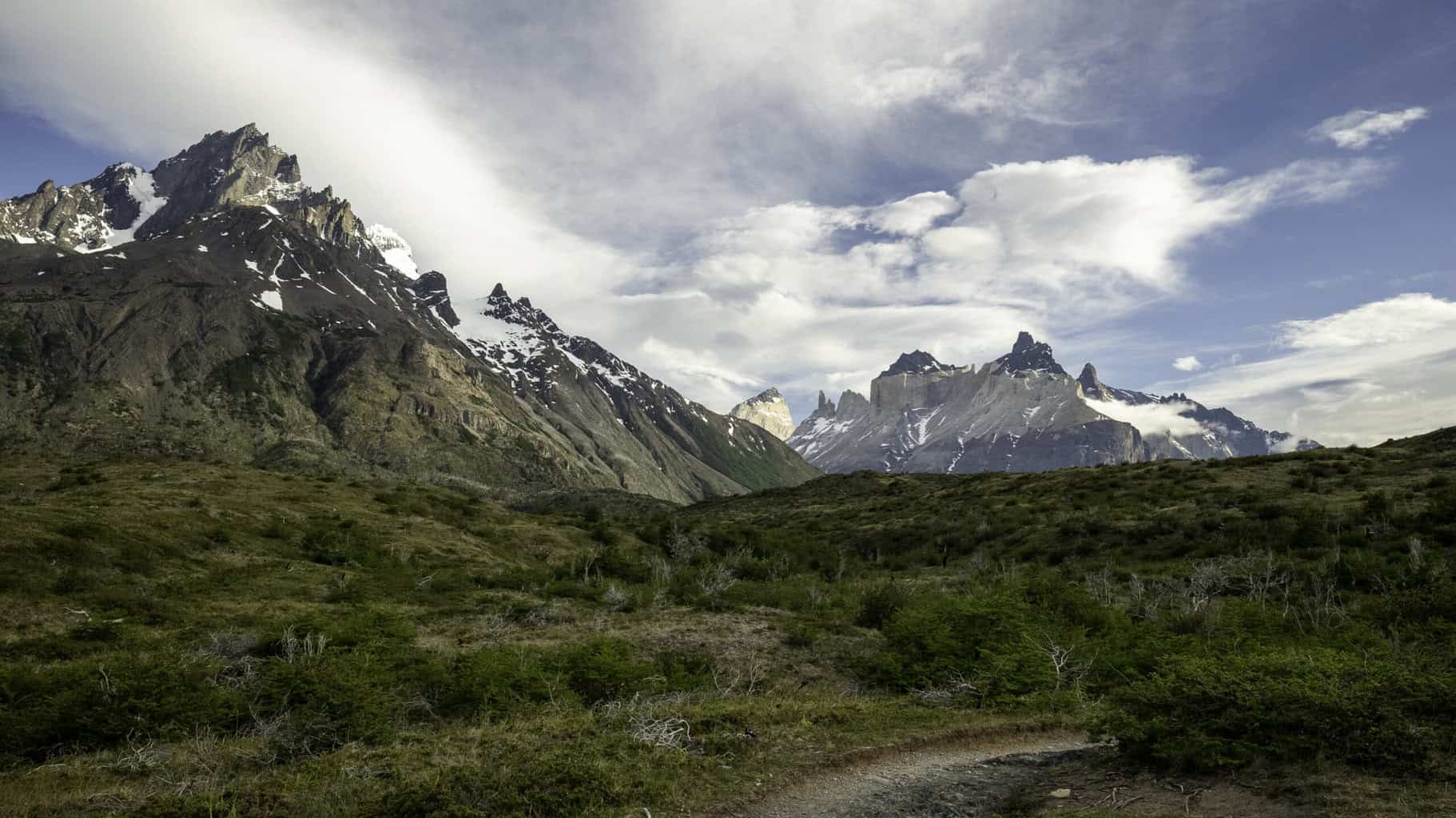
Getting to Torres Del Paine National Park
From the U.S. or Europe, you can fly to Puerto Natales or Punta Arenas in Chile, or El Calafate in Argentina. From any of these places, you can book a bus ticket through Bus Sur to get into Torres Del Paine. Depending on your starting point, you will most likely want to book a ticket to Laguna Amarga, which is the main bus station in the park.
Travel Tip: Check your bus times carefully when booking—they don’t always align. You may need to spend an additional night in Puerto Natales if the bus times don’t match up with your arrival time.
Flight Tip: Before you pay full price for a flight, check out the Daily Drop Pro. This membership site allows you to see all available flights, routes, and partner airlines. Best prices and current point offers for all airlines and some credit cards too. Check out the Daily Drop Pro here
How to Book Your Hiking Trip in Torres Del Paine
- Secure your permit in advance
- Must reserve a designated camping location
- Book camping reservations/permits online
The W Trek and the O Trek both require permits, which come in the form of your booked tent or refugio sites on the route. You are only allowed to spend the night in designated locations and you cannot camp without a reservation made in advance.
I recommend booking your reservations on Torreshike.com. It’s the best place I’ve found to book non-guided treks on both the W and O Trek routes. Just enter the dates you want to see which sites or refugios are available for those dates.
Torres Del Paine Lodging & Food Costs
- Average lodging cost: $65-$150/night
- Average dinner cost: $40-$70/person
Prices to stay and eat in Torres Del Paine vary depending on the lodging type you choose. The cheapest way to stay in the park is to bring your own gear and camp, which costs around $65/night.
You can book premium tents with or without sleeping bags, which starts at around $150/night. There are also refugios that offer dormitory-style sleeping arrangements and access to showers and nicer amenities, but costs vary.
For reference, here’s how much it cost me to hike the W Trek on my last trip:
- Round-trip fight from L.A. to El Calafate, Argentina: $1,600 roundtrip
- Buses to Puerto Natales to park: $70
- Permit for W Trek with 3 nights on the trail and 2 dinners: $750
- Meals & gear: $300
- Ferry across Lago Grey: $90
- Post-hike stay at Lago Grey hotel: $600
- TOTAL: $3,410
All the campsites on the W Trek have shower and bathroom facilities, as well as covered backpacker cooking areas with power outlets. Refugios usually have some sort of camp store and serve breakfast and dinner, which is often booked in advance. If you’re going solo, you can usually get away with grabbing a spot last-minute (as long as you get to camp early). Bag lunches can also be booked in advance for the next day. Dinners typically cost between $40-$70/person.
If you’re hiking east to west, you can also book a kayaking excursion or glacier walk with Bigfoot Patagonia for an additional cost before heading across Lago Grey via ferry. This way, you’ll be able to see the glacier and end up at Hotel Lago Grey, where you can enjoy some post-hike relaxation at one of the best hotels in Torres Del Paine. I’ll share more about this hotel below.
My Experience Hiking the W Trek in Torres Del Paine in 4 Days
Day 1: Staying at Hotel Lago Grey & Starting the W Trek
My driver brought me down an hours-long dirt road, where I got my first taste of the towering peaks and glacial lakes from several overlooks and the scenery rolling by my window. At Hotel Lago Grey, I was greeted happily by the general manager, Juan Pablo, who told me that a huge iceberg had broken off the nearby glacier and had come to rest not far from the hotel. With his recommendation, I knew I had to go out to see it on the waters’ edge.
Eager with excitement to get out and explore before the darkness came, I checked into my room and was immediately wowed by the food to ceiling windows that showcased the peaks and icy waters of Lago Grey. Mesmerized, I hurried to grab a tripod and camera and headed down to the shoreline to see this monumental iceberg.
This was certainly one of my favorite hotel stays in a long time. The food, scenery, and neighboring wildlife were all fantastic. You can read my full Hotel Lago Grey review here.
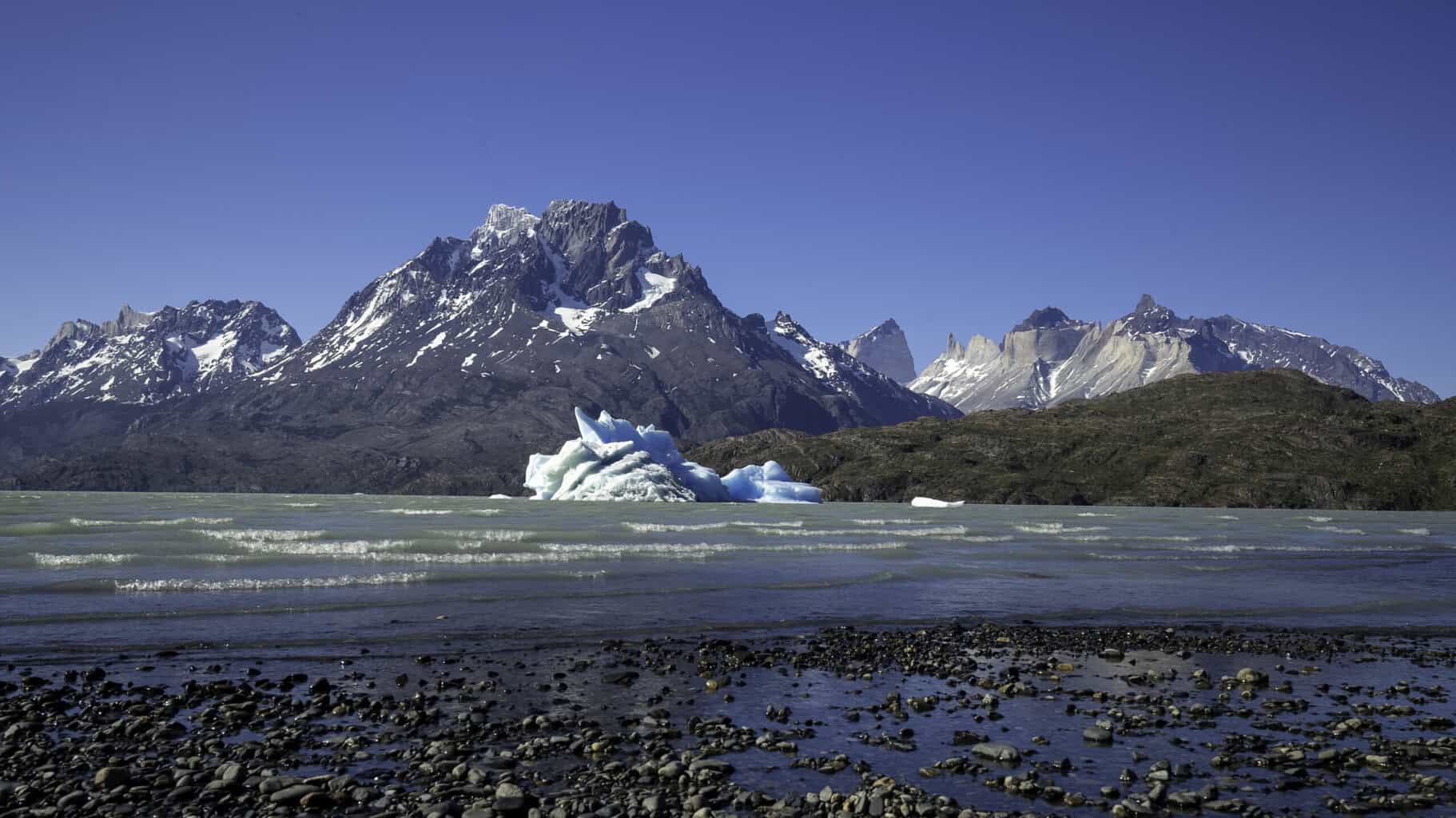
Starting the W Trek
After familiarizing myself with Hotel Lago Grey, I figured I could pretty much happily skip the whole trek—this place was just spectacular and I wasn’t prepared for how amazing the views would be right from my window.
I waited around most of the day before deciding to begin the W Trek, but eventually made my way down to the shoreline of the lake to board the Grey Glacier catamaran. This catamaran is operated by the hotel and used by park visitors on round-trip tours, as well as hikers starting or returning from the W Trek. It costs $110/person for a round-trip tour or $100 for hikes. The tour takes you across the lake and right up to the glacier itself.
Grey Glacier was 13 miles long in the 1990s, but today, it’s only about 4 miles long. It’s still huge and hides 80% of the iceberg’s mass below the surface. This, along with changes to the other 5 glaciers in the park, is a stark reminder that even here at the very bottom of the Earth, temperatures are rising.
Staying at Refugio Grey Hiker Hostel
I arrived on the opposite shoreline around 4pm. That night, I would stay at the Refugio Grey inside the hiker hostel in a shared room with about 5 other hikers. Prior to getting settled, I hiked up the western arm of the W Trek, which took me to some spectacular viewpoints over Grey Glacier and across several swinging bridges. With long days during the Southern Hemisphere summer, I had ample time to hike the 2 miles.
I was utterly surprised by how busy the refugio and the campsites were, which made me a bit uncomfortable. This was certainly the busiest trail and camp refuge I ever dealt with. My room at the Refugio grey slept 6, and I hadn’t talked to any of my roommates. Most of them were up late drinking or hanging out in the bar and restaurant, which didn’t really align with my reason for hiking the W Trek.
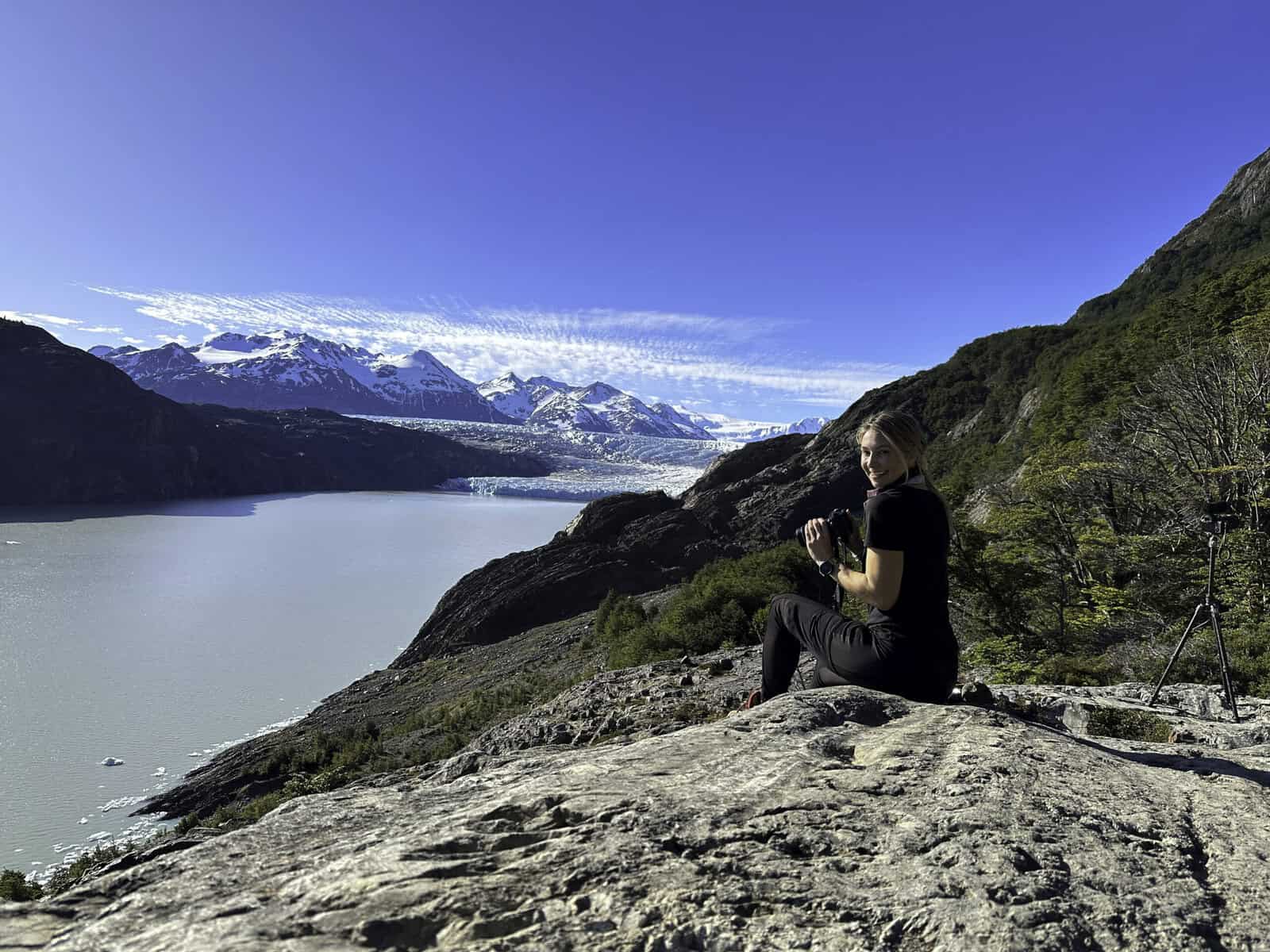
Day 2: Refugio Grey to Paine Grande
I started the day hiking from Refugio Grey to Paine Grande, which I knew would take a few hours at the most. I wish I had booked kayaking with Bigfoot for Day 2—learn from my mistake and consider adding this excursion on!
The hike felt much longer than it was since I’d been out of shape for the 2-3 months before my trip, just sitting at my desk and editing. My hips had been in pain since before I left and ached wildly at every step. I finally arrived to Paine Grande around 3pm and quickly got to work setting up my tent with one side to the hill but with strong winds from the open direction.
The tent sites weren’t great—they’ve reserved most of the good ones for the premium tent sites, and there have to be close to 100 of them around the refugio.
Premium tents at Paine Grande Camping areas along the W Trek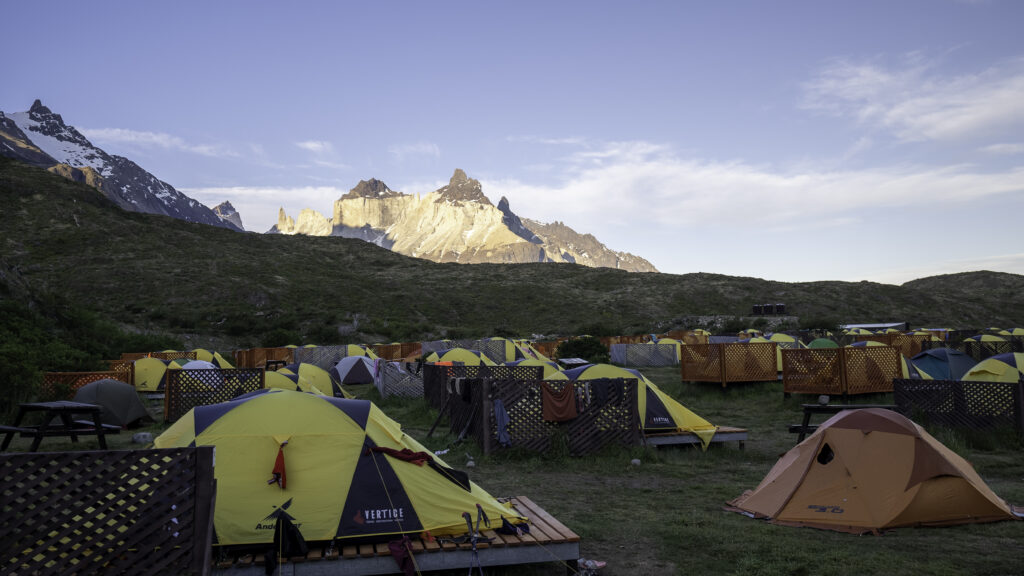
Dinner in the Camp Cooking Area
Feeling really tired and low-energy, I was hoping for a snack. I resorted to a bag of vegetable chips because the offerings in the market were meager and consisted mainly of crackers, donuts, hot dogs, and ramen.
One thing I loved was that there was an entire building for for all the campers to cook and eat, with about 15 electrical outlets for charging devices and ample tables. Since I got there early, there was still a lot of room.
I booked a seat at the 6pm dinner service, which cost me $23 and was served buffet-style. There were options for both meat-eaters and vegetarians as well as an onsite store with backpacker meals. Upstairs, there was a bar that served pizza and sandwiches.
I rented a sleeping pad for $10 (I left mine at home to save space). The one I rented was big and cozy and barely fit in my one person tent.
Before dinner, I sat by the waterfront and soaked my feet. I only lasted for about 15 seconds before pain from the frigid ice water shot through my ankles! Note that swimming isn’t allowed in the lakes or rivers here for this reason—the frigid temperature would make you hypothermic in no time at all.
I planned to make my own breakfast in the morning and try to get out early to drop my bags at Campo Italiano. From there, I would head up the big ascent to the Brittanico viewpoint (the middle leg of the W Trek).
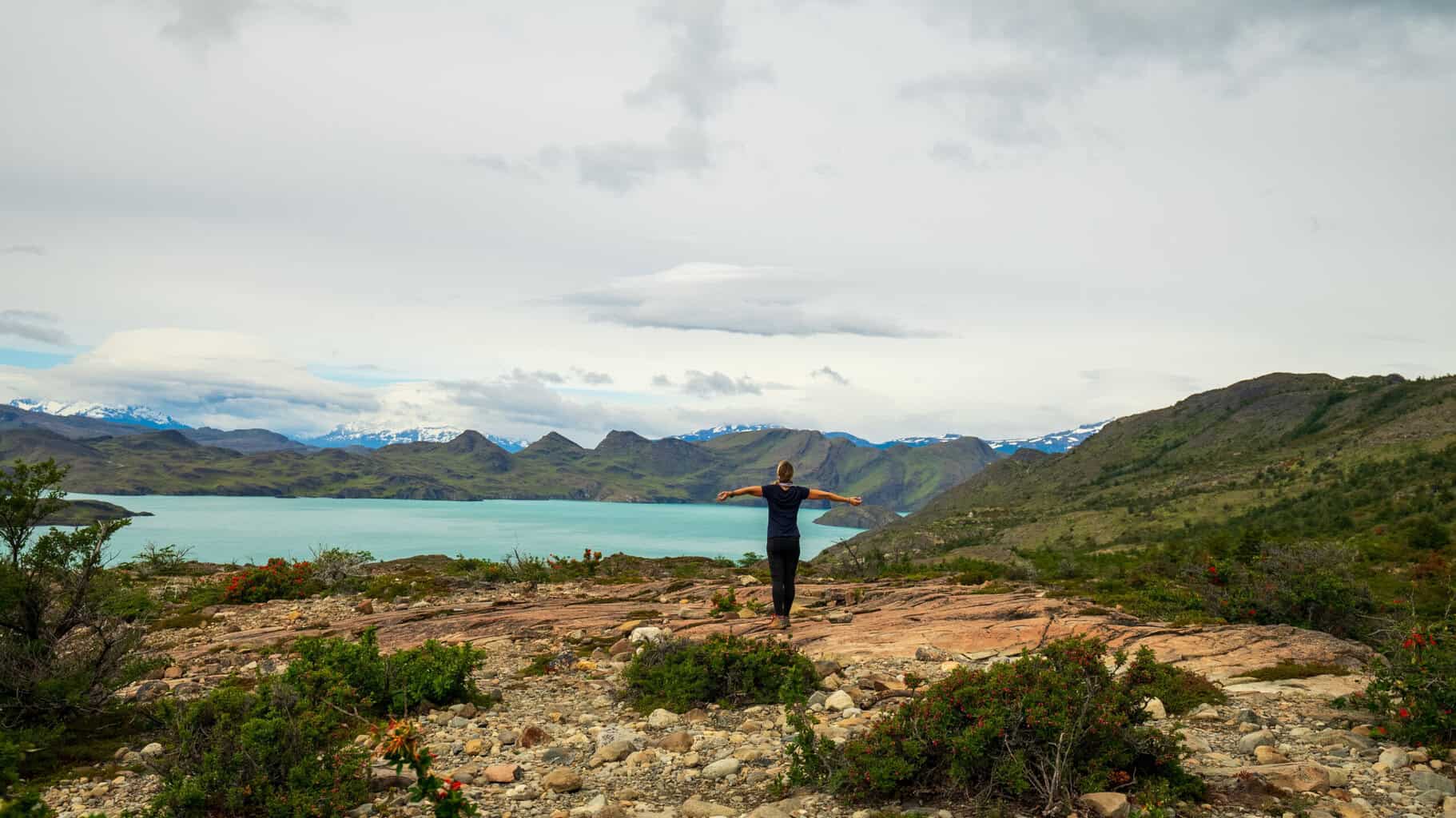
Day 3: Paine Grande to Cuernos
Today was a big mileage day with plans to hike about 15 miles ascending up to the viewpoint of Mirador Britanico. I rose early and was on the trail before most others, which allowed me to hike for many miles without seeing any other hikers.
I followed the lake’s northern shoreline through scrubland with fantastic views of the jagged granite peaks. The weather held off, and while it was somewhat overcast for much of the day, I remained dry on the trail.
At the bottom of this line of the W Trek is the guard station of Campo Italiano, where I refilled my water bottles, used the restroom, and stored my backpack for the hike up to Britanico. It was a welcome reprieve to leave my belongings behind and just bring a small day pack with water, snacks, and my camera.
Hiker tip: If you are hiking the W Trek in Torres Del Paine, bring a small stuff sack or secondary collapsible backpack that you can use on the several sections that go up and back. This will allow you to drop your big backpack and just take a few things for a lighter load.
The hike up to Mirador Britanico took me through the beautiful French Valley, and I could see why most hikers say it’s their favorite area of the W Trek. The valley is full of rich hues, colorful foliage, and as you ascend, has fabulous views of the turquoise lakes below and nearby glaciers full of waterfalls.
The mirador is spectacular with views in all directions, but its most awe-inspiring overlook is the view of the Cordillera Del Paine, blanketed in moving clouds that move like whispers in the wind. This is also a popular spot for people to have lunch and linger for a while.
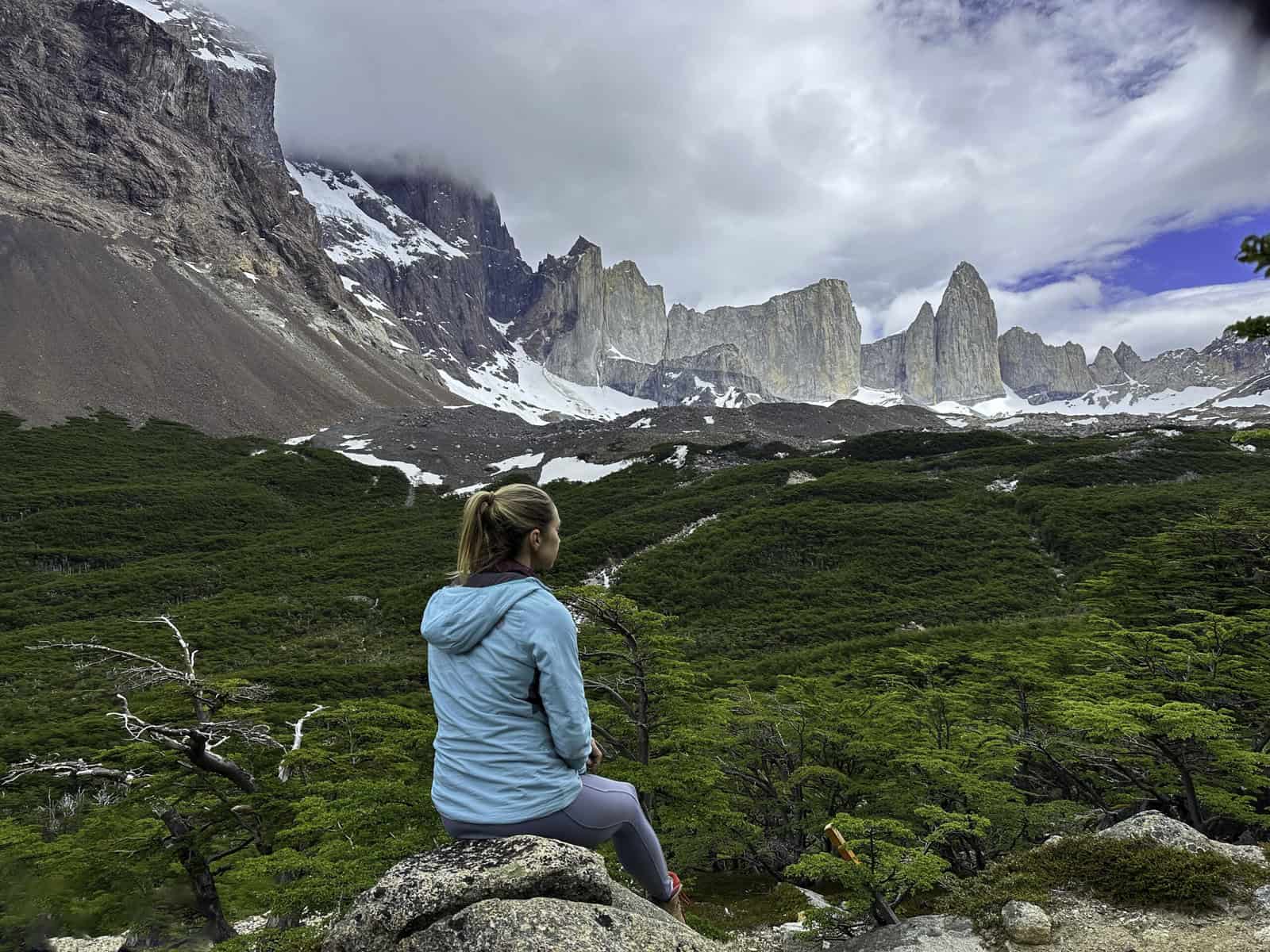
Mirador Britanico to Cuernos
Don’t linger too long because there are many more miles to go on this day of hiking. From Britanico, I descended back to the guard shack, threw my pack back on, and headed east toward a campsite called Cuernos.
It was a long hike with many ups and downs. I was happy to be hiking west to east and not the other way around, which had many more meters of steep incline.
That night, I rented a premium tent at Cuernos in the style of a rooftop tent. This area of the park was wetter, and being sheltered in the trees, I was happy to not be close to the ground for the night. My tent came with a sleeping pad, mattress, and pillow, making for a very cozy stay.
Hiker tip: If you are doing this hike in the rented tents or even in the hostel, I recommend bringing your own sleeping bag liner for cleanliness and extra warmth. It’s still lighter than lugging your own sleeping bag.
As a solo traveler, it was usually quite easy for me to find a spot at dinner—as long as I got to camp early enough. If you are going in a group, I would strongly advise booking meals in advance when you book your permit for overnights. The restaurant at Cuernos was cozy and had the best food along the trail in my opinion. Everything was plated and served at assigned seats on long tables, allowing you to get to know some of the other hikers.
Cuernos also had a nice cooking hut for backpackers and clean bathrooms, where I even got in a shower. It was a push-button shower to limit water usage, but it felt great to rinse off nonetheless. I also saw a woman blow-drying her hair at this refugio, which seemed like a strange splurge item to carry, but hey—to each their own.
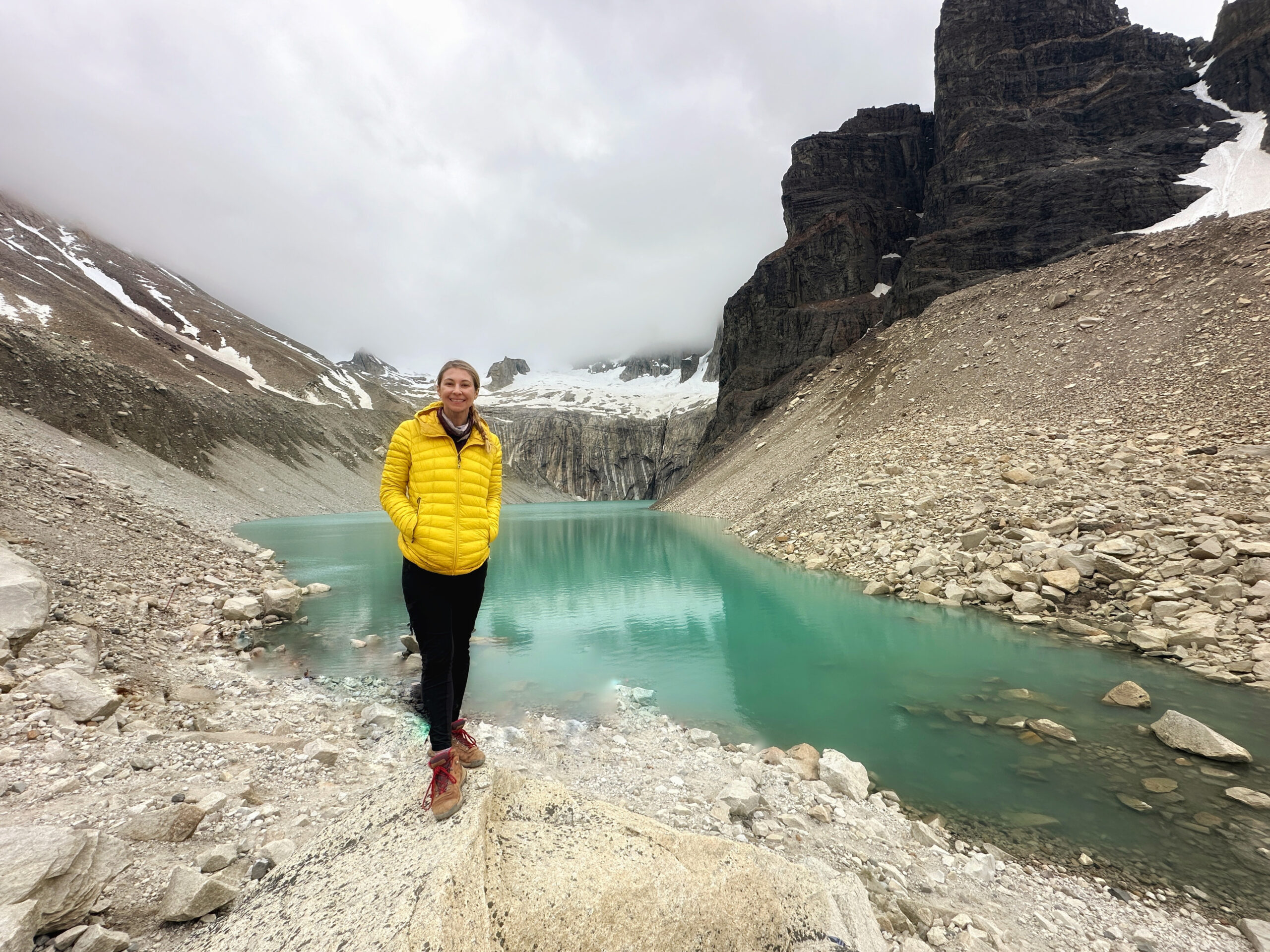
Day 4: Cuernos to Torres Norte
I woke up for my longest day on trail. Most people do this section in two days, but I decided to do it in one. I made my own breakfast in the backpacker’s hut and made a beeline for the trail as soon as I was done. I would be hiking 20-ish miles to finish the trail and hike up to the Mirador of the Torres Del Paine.
I wish I had packed more snacks, as most of the camp stores were devoid of vegetarian items or anything remotely healthy. For this long day on the trail, I survived on an oversized (but delicious) chocolate bar with hazelnuts.
The morning on trail was beautiful and meandering with a nominal amount of incline. I was finally used to my pack and felt comfortable for the first few miles. As I neared the eastern section of the trail, the incline increased exponentially and so did the busyness of the trail. That’s because the eastern side of the W Trek is near the park entrance and where many people come to day hike the Torres Del Paine. It’s also where all the hikers doing the O Trek start.
Refugio Chileno to Base Torres
I was still feeling great and by around 2pm, I reached the Refugio Chileno. It’s the closest refugio to the Base Torres and where many of the hikers I met along the trail would be staying that evening. As for me, I grabbed a grilled cheese, dropped my big backpack, and headed up to the Torres Del Paine for a late afternoon.
Note that many of the miradors at the Base Torres and Britanico do close to keep hikers safe. Hiking in the evening is not allowed in the park, so visitors are not allowed to start hiking up to this viewpoint after 4pm.
As I ebbed closer to the Base Torres, the trail became steep and narrow and a congo line of people soon had us all stopping in our tracks. I made my way around many of the slower hikers and soon saw an expansive rock-filled area that descended down to the small lake underneath the Torres Del Paine.
These 3 massive granite peaks are what the park is named after. Sadly, they were hidden in the clouds, but I knew that the weather and the clouds can change in an instant. So I waited a while, just hoping that the clouds would clear and armed with my camera on a tripod, hoping to shoot a timelapse of the moving clouds.
But the weather was not in my favor and the clouds stayed put for the better of an hour. I eventually decided that I needed to head back and bid farewell to the beautiful granite peaks and picturesque waters underneath.
Back to Torres Del Norte
The hike back to the Torres Del Norte was long. At about 7 miles from the viewpoint, my feet hurt, my collarbones were sore, and my stomach growled with hunger. I slogged on and finally made it to the end of the trail, where I would sleep in another rooftop tent. I lucked out and snagged the last spot at dinner. After filling my belly, I crawled into my tent, barely able to move after such a long day.
The next morning, I grabbed a shuttle from the visitor’s center to Laguna Amarga. I boarded a bus back to the western side of the park for another night at the Hotel Lago Grey, where I was reunited with my suitcases and treated to a comfy bed and a hot shower. It was a much-needed pick-me-up after the long day and I really recommend booking a room to look forward to here after you complete the W Trek.
W Trek Hiking FAQs
How long does it take to hike the W trek?
It typically takes about 4-5 days to hike the W Trek. I finished it in 4 days by squeezing a much longer (20 or so miles) hike in on my final day, but you can easily spread it out over 5 days for a less grueling trek.
Does the W Trek close?
The trail cutoff or closing time is 3-4pm, and no hiking is allowed after dark. The trail closing times are enforced as rangers walk the trail and advise any hikers to turn back after 4pm.
The W Trek is fully operational during the spring and summer (mid-September to mid-April here in the Southern Hemisphere). Campsites, visitor’s centers, and refugios close during the fall and winter, so hiking the W Trek during these months requires booking a special excursion and is much more challenging without the park’s lodging options along the way.
Is the W trek difficult?
The W Trek is a difficult trail with sections that are easy, moderate, and challenging. You’ll climb roughly 9,620 feet in elevation along the way, with the most difficult section being the final section of the hike as you reach the Base of the Towers. Some parts of the trail are mostly flat, but being in the Cordillera Del Paine mountains, you can expect the W Trek to be a challenge.
Can beginners do the W trek?
It’s possible for beginner hikers to do the W Trek, but it’s best if you have some hiking experience and are physically fit enough to endure the elevation gains on the trail. If you decide to go as a beginner, make sure you bring everything on the backpacking essentials checklist and do plenty of research so you’ll know what to expect.
Where do you sleep on the W trek in Patagonia?
You can camp or stay at refugios on the W Trek. If you decide to camp, prices are around $65/night or $150/night if you choose to book a premium tent. Refugios are dorm-style lodgings with some extra amenities, like restaurants, showers, and bathrooms, and costs for each one vary. There are about 6 refugios on the W Trek.
What is the difference between 4 days and 5 days on the W Trek?
If you choose to do the 50-mile W Trek in 4 days, you’re in for a much longer hike on the final day (about 20 miles). If you opt to do the hike in 5 days, you can split those 20 miles up and conquer about 10 on the 4th and 5th day for an easier experience.
How fit do you have to be to hike Patagonia?
You should be physically fit to hike in Patagonia, including on the W Trek. Intense elevation gains over 9,600 feet on the W Trek make it essential to acclimate your body to climbing with exercise, practice hikes, and training with a pack beforehand.
What gear do I need for the W Trek?
The W Trek is located in the southern hemisphere and is known to have high winds, rain and varying temperatures. Bringing layers, waterproof gear and sturdy broken in hiking boots are a must. The specific gear you need will vary depending on where you are staying along the trail and of course how light or heavy you want your pack to be. Since I did a mix of camping and refugios I had a few more things than others.
For a full list of gear you can check out my gear locker on Rockporch.
My Thoughts on Hiking the W Trek in Torres Del Paine
This adventure left me feeling totally exhilarated, physically exhausted, confident, and capable. There were some parts that had me scratching my head, and I found myself reflecting on a few funny things I noticed on the trail:
- Woman bringing and using a hair dryer
- Double backpacks
- Hearing hikers playing 50 Cent’s “Many Men”
- Some hikers foregoing basic hygiene (dirty clothes, not brushing teeth, not showering)
- The shuttle drivers are amazing and they go really fast
- Flamingos hanging out in one of the lakes
I also received quite a bit of bad information while I was on the trail. For example, at Hotel las Torres, they told me I could board the bus at 8:15 at the hotel, but it was actually at the welcome center. The reception desk at Refugio told me there was no shuttle at 8:15, but thankfully, the women at the welcome center got me a shuttle anyway.
I also experienced lots of waiting around for buses and ferries. When I got to Pudeto to take the ferry to Paine Grande, we waited 35 minutes before taking off.
Some of the highlights from my trip were my stay at Hotel Lago Grey—a truly welcoming and comfortable experience in gorgeous surroundings. I liked my dinner at Las Cuentas—it was great with a more intimate feeling that I wasn’t expecting.
It was really cool overnight at Torres Central, the nicest refugio with the most spacious lobby and restaurant. This is where I enjoyed the best food on the trail with a veggie quiche and chickpea stew for dinner. I loved the hike up to Mirador Britanico through the French Valley and it was one of the most scenic sections I hiked.
Things I would’ve done differently: Bring a sleeping bag liner, more snacks, book a kayaking excursion with Bigfoot for Day 2, and spring for a premium tent site at Paine Grande for a better location out of the wind.
Overall, there are pros and cons to hiking the W Trek in Torres Del Paine National Park, but if this has been a dream or goal of yours, you should absolutely go for it.
While clouds got in the way of the grand finale views on my last day of hiking, this experience was incredibly rewarding and full of adventure every step of the way. With some of my mistakes to learn from and tips to make the most of your trek, I think you’ll have a great time on the W Trek!
I’ve got some helpful resources below if you’re thinking about getting started with backpacking and planning more adventures like this:
Pin this article!
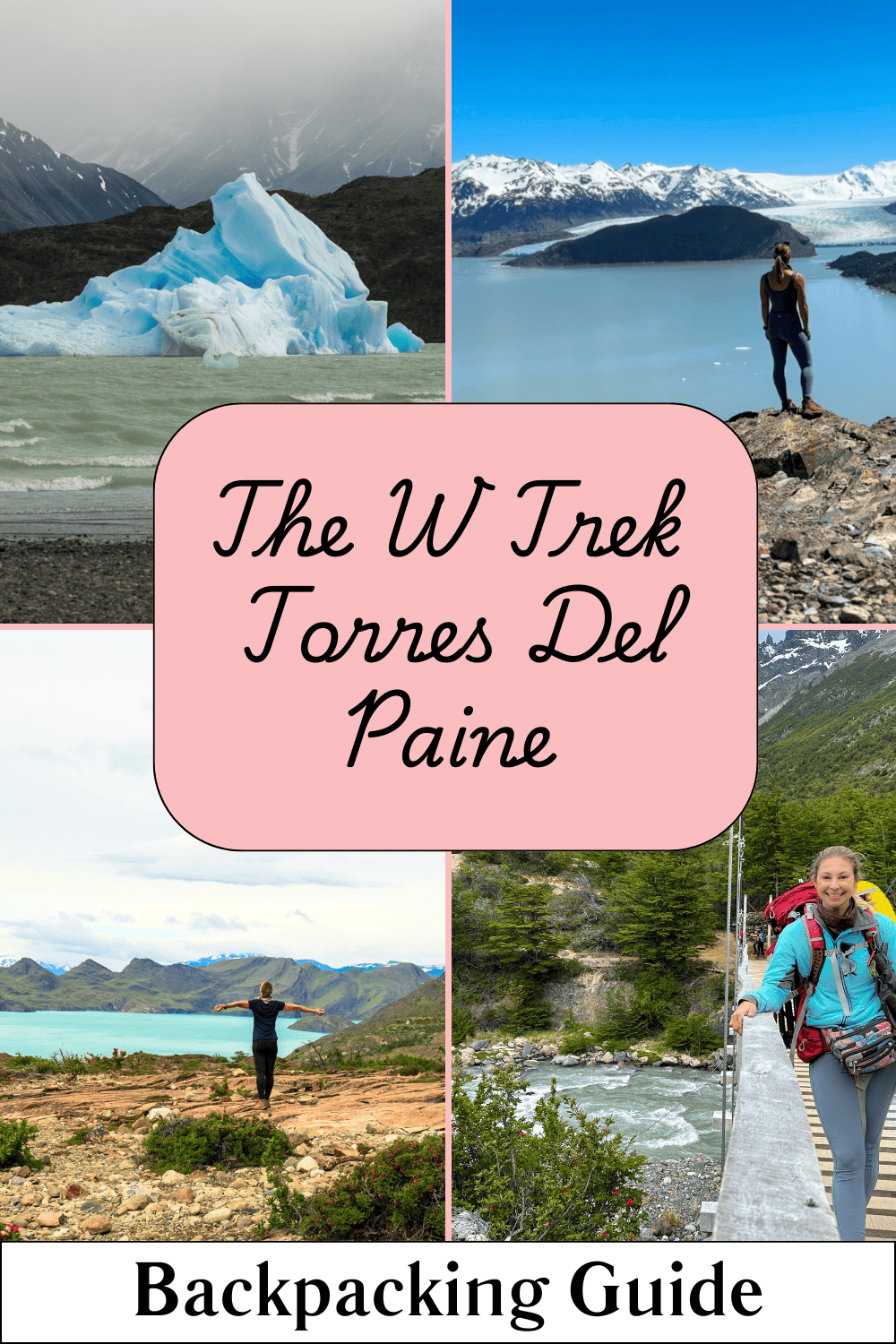
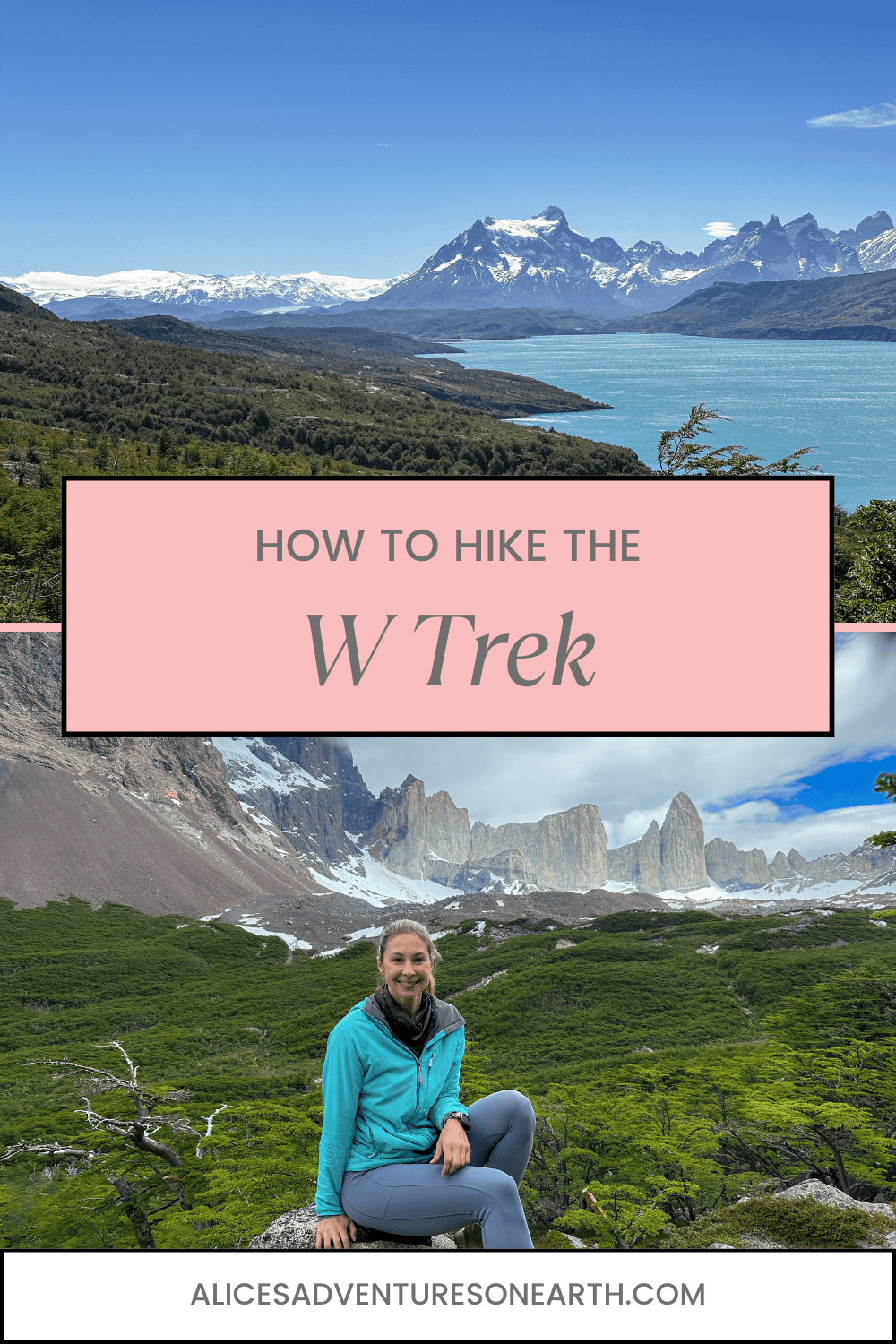
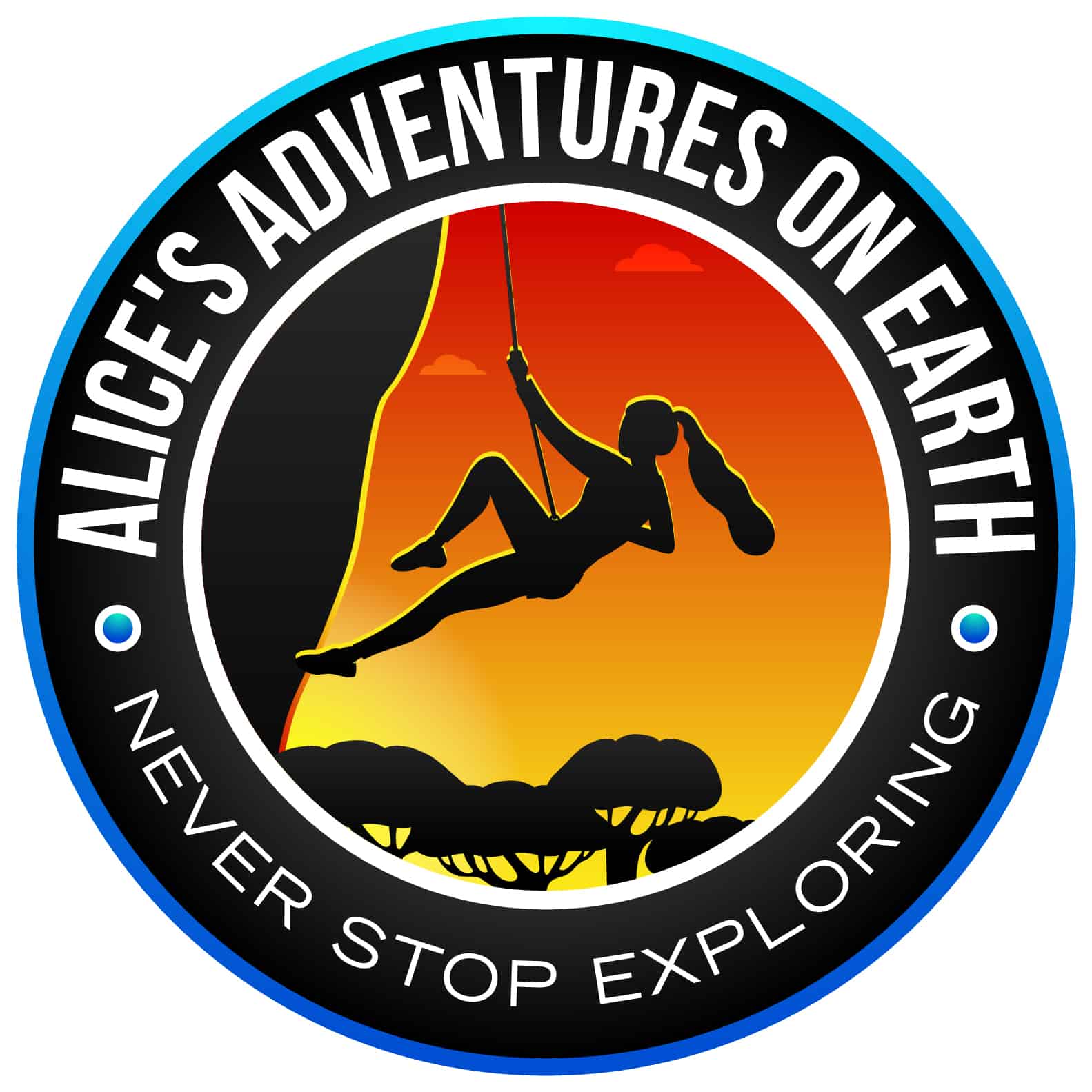
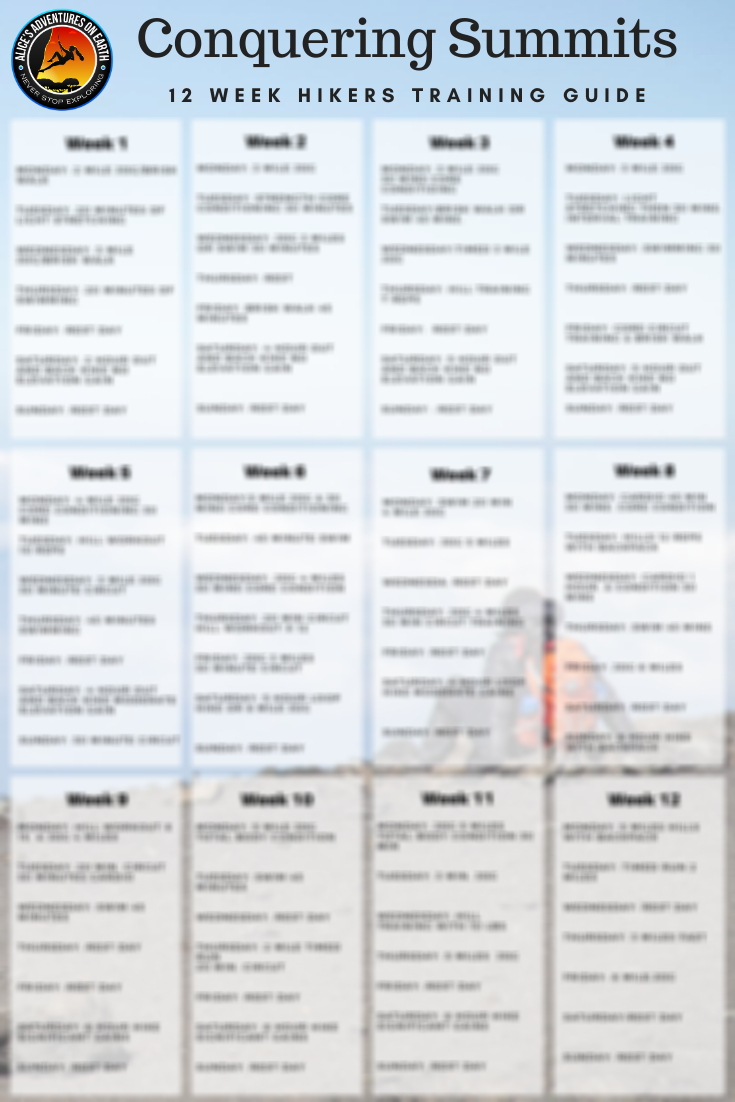


0 Comments